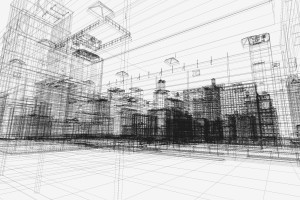When developing construction activities for major projects, it’s important to understand the role BIM plays in planning and logistics to ensure safety regulations are met, potential roadblocks are avoided and an overall  smooth construction process is achieved.
smooth construction process is achieved.
Although there’s plenty of heavily detailed 4D and 5D BIM planning and logistics guides available on the internet, there are five essential ideas to remember when implementing BIM for project planning that are designed to help you save time and avoid complications.
- Include the subcontractors in the process. It’s important to keep this team abreast of major moments in the construction process. Their insight and feedback can fill in necessary gaps and details to help set up the best plan for executing.
- Set the model up for playing through different options. In most planning meetings, whenever someone inquires, “What if we…”, it has always been extremely helpful to be able to quickly swap out equipment or activity sequences to help answer that question. When setting up the model, add in (or be prepared to add in) other equipment or components that you might need.
- Consider the resource requirements. Set up necessary resource graphs for labor, materials, and equipment that can be referenced as you run through the different options during the project. The model data can provide quantity data that can be used to help understand the resource requirements.
- Don’t forget stored materials. Extremely well run projects put tremendous consideration into setting up a laydown yard as well as the location where materials are stored and how it is staged. This means that when things are ready to be used, they’re readily accessible, cutting down time looking for them. The model can help with this because you can set up volumes of space that you can allocate for the laydown space to make sure everything is properly planned out.
- Isolate any potential hazards. Make sure to isolate any potential site hazards and be sure to pay special attention to work around these areas.
By following these five key ideas, you’ll be able to add immediate value to any active construction projects by ensuring safety measures are met, and proper logistic details are in order; ensuring flawless execution in the construction process. For more detailed tips on safety with BIM and identifying risk, check out one of our recent blog posts on BIM safety to learn more.
This blog post is by Tim Kelly, Product Manager at Assemble Systems. If you enjoyed this post, please help it spread by emailing it to a friend, or sharing it on Twitter or LinkedIn.

Comments are closed.